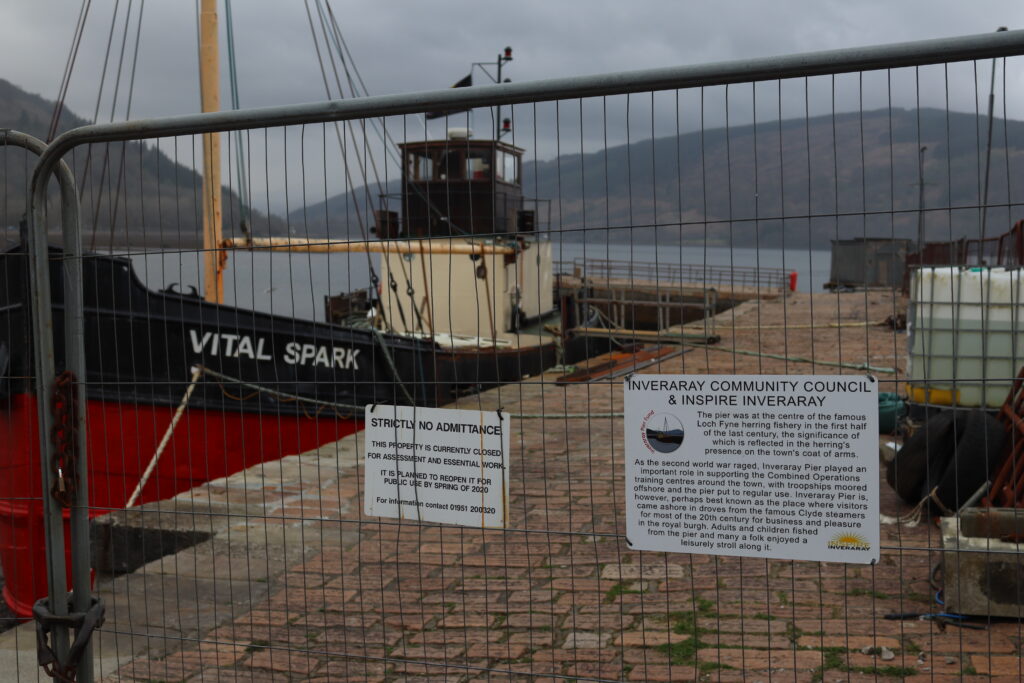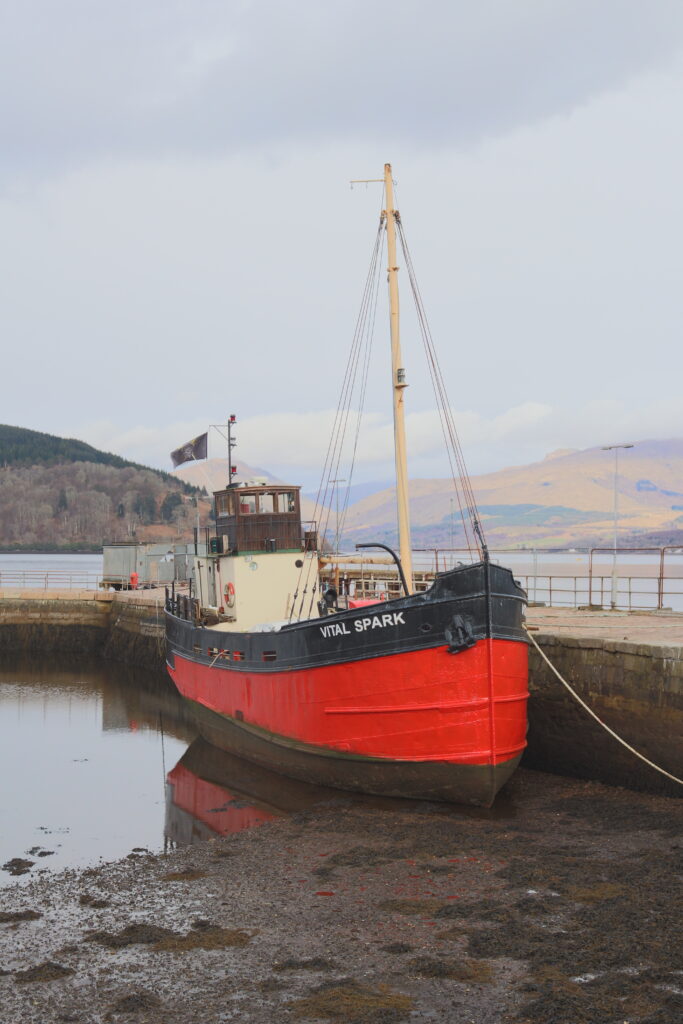On relocating close to the Clyde Coast, it was an obvious observation that various piers that had in years past assisted in the transport between destinations had been of late sadly neglected. The first encounter with a dysfunctional pier was at Millport on the Isle of Cumbrae in 2021. The pier was essentially sound but required a degree of remedial work which, for various obscure reasons, had been delayed by North Ayrshire Council. Local fundraising was in place but was not proving successful. The not too distant memory of country dancing taking place on Millport pier to welcome a visit of the Waverley paddle steamer symbolised the energising community bustle thus generated and was now sorely missed. The obvious loss of revenue to the resort from the absence of such activity was another negative factor.
Slightly further away, the pier at Inveraray on Loch Fyne is also out of bounds. A forlorn notice in the spring of 2022 announced the expectation that it will be open again by the spring of 2020. Local community fundraising has still some way to go to purchase the pier and undertake required renovation work. A Clyde puffer renamed the ‘Vital Spark’ languishes against the ‘out of bounds’ pier.
Not far distant from Inveraray, Arrochar pier, at the head of Loch Long is now derelict with the last regular steamer sailings dating from the 1960’s. It was a relevant observation, however, that the demand for such steamer traffic had, by the time of its closure, significantly declined. It was, however, an impressive sight to recently observe the paddle steamer Waverley sweep down Loch Long one day towards Arrochar, though it would have been unable to have called there.
While steamer sailings on the Clyde coastal routes were largely based on tourist traffic, on the more remote regions of the Highlands and Islands of Scotland such transport was often the sole means of community survival. With the gradual improvement of road transport, however, as well as significant depopulation of remoter areas, such connections have fallen out of use and the associated piers and jetties become derelict. On major island routes, the focus has become the establishment of ferry services that provide continuity of connection to road network services. At Broadford on the Isle of Skye, while the stone pier remains to support local fishing boats, in earlier times an extended wooden pier supported various local industries and also passenger steamers would call regularly to boost tourism.
It is a curious observation that in 1812 Henry Bell, a native of Helensburgh, initiated a passenger carrying paddle steamer service between Glasgow, Greenock and Helensburgh. This was a European first. Gradually, however, the wooden section of the Helensburgh pier has fallen into disrepair and was closed on safety grounds in October 2018. It is only in 2022 that some funding appears to have been made available for remedial work to the masonry section, but not to that of the wooden section. Apparently local councils tend to see no economic return from pier renovation. Local communities who seek to develop their facilities would say otherwise. They see working piers as a springboard of enterprise, innovation and pride.
Perhaps, however, there is a need to revisit the engineering content of piers and introduce novel construction technologies that would provide more attractive refurbishment/replacement options. The offer of say a £50,000 prize for a winning entry could be a modest step in the right direction. Perhaps an entire pier can be assembled in a construction yard, transported to the intended site and installed onto prepared foundations – using the already developed technologies of offshore marine engineering.


